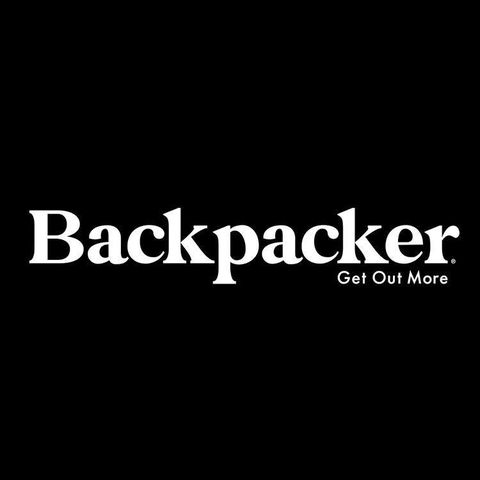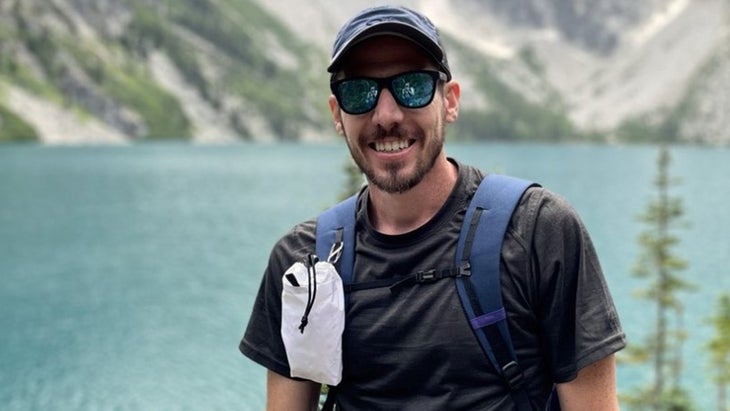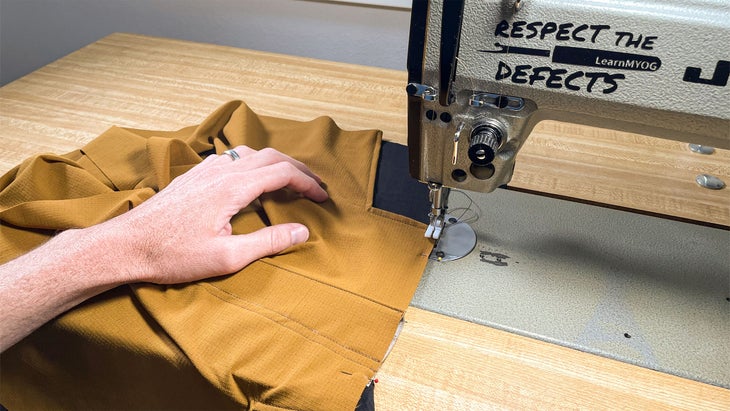



Ultralight hikers have always been a passionate bunch of tinkerers. A few decades ago, the best way to find ultralight gear was to make it yourself. The earliest examples of ultralight brands didn’t sell finished gear, but patterns and kits to help others create their own trekking pole tents and frameless backpacks, like legendary thru-hiker Ray Jardine’s gear kits from the early 2000s.
But as ultralight gear enters the mainstream, it’s easy to think that the DIY ethos that ruled in the ‘90s and early aughts has disappeared entirely. Cottage companies are expanding, outsourcing production, and seeing their products hit shelves at REI and other retailers. If you know where to look, though, the ultralight maker community is still going strong. Today, it has a name—MYOG, or “make your own gear”—and devotees on Reddit, Instagram, and other online communities continue to experiment with new designs, fabrics, and outlandish ideas.
At the center of the MYOG community sits Tim Martino, a Seattle-based engineer who created LearnMYOG, an online repository of patterns and guides for all things ultralight. There’s a steep learning curve that comes with the MYOG hobby—technical fabric names to memorize, equipment to purchase, and sewing tips and tricks to learn. Martino has made it his mission to demystify that process.

“The MYOG community is very open,” Martino says. “Everyone likes to share their ideas, learn from each other. It’s not very competitive.”
Martino got his start in the MYOG community by outfitting himself with homemade stuff sacks for a trip to Mount Whitney in 2016. His gear-making chops grew as he set his sights on backpacks and apparel. He became a regular fixture on Reddit’s MYOG subreddit, where, like most members, he posted his own projects and solicited advice from others. Before long, though, other users were clamoring for his posts. He began to post patterns, rather than completed projects, for others to use, offering feedback as they went. Eventually, Reddit felt like the wrong platform for organizing all of the information he had to offer. Instead, he started a website to house all of his digital patterns, and a Youtube channel where he offers step-by-step instructional videos.
Today, LearnMYOG has transformed into a one-stop introduction to gear-making, and Martino’s patterns have been downloaded thousands of times. He’s put together an exhaustive how-to called “Zero to Hero” that gives beginners a progression of patterns to tackle, starting with a zippered pouch, and ending with a vest-style trail running pack. With a clever bit of code writing, he’s made his simplest patterns, like stuff sacks and pouches, customizable. Users can enter the final dimensions they’re looking for, and Martino’s code spits out the exact pattern sizing required. He’s also partnered with fabric suppliers like Ripstop by the Roll, which offers physical versions of LearnMYOG patterns, and Discovery Fabrics, where LearnMYOG customers can get discounts on fabric purchases.
Many of Martino’s simplest patterns, like tote bags and fanny packs, are available for free. He does charge for more complicated designs—maxing out at $30 for his pack patterns—but says his goal with the pricing model is make sure the website is self-sustaining. “It’s not even a side hustle,” says Martino, who has a full-time job as a project manager at an engineering firm.

In the end, Martino sees himself as just one part of an ecosystem that’s making a MYOG hobby easier and more accessible than ever. Thanks to outdoor fabric retailers like Ripstop by the Roll, hobby makers now have access to fabrics and hardware that are as high-quality as what big brands use. And at $30 a yard for premium fabrics like X-Pac or Ultra, there’s no more affordable way to get into the high-end ultralight game. The growing industry is constantly innovating, too, giving hobbyists plenty of inspiration to draw from and replicate on their own.
Even buying a sewing machine—the biggest purchase any DIYer must make—is easier now. “Before, the answer to what machine to buy was always go to Goodwill and buy a vintage one,” says Martino, alluding to the affordability of modern equipment. Now, his recommendation for a first machine is the Singer HD, available from big box stores for less than $200.
For anyone interested in gear-making, Martino suggests jumping in headfirst and joining the online community. “It’s a really fun hobby. You can just go buy a yard of fabric and make a backpack,” he says. “To me, it’s the community aspect that makes it all worthwhile. If you see other people doing it successfully, you think you can, too.”

